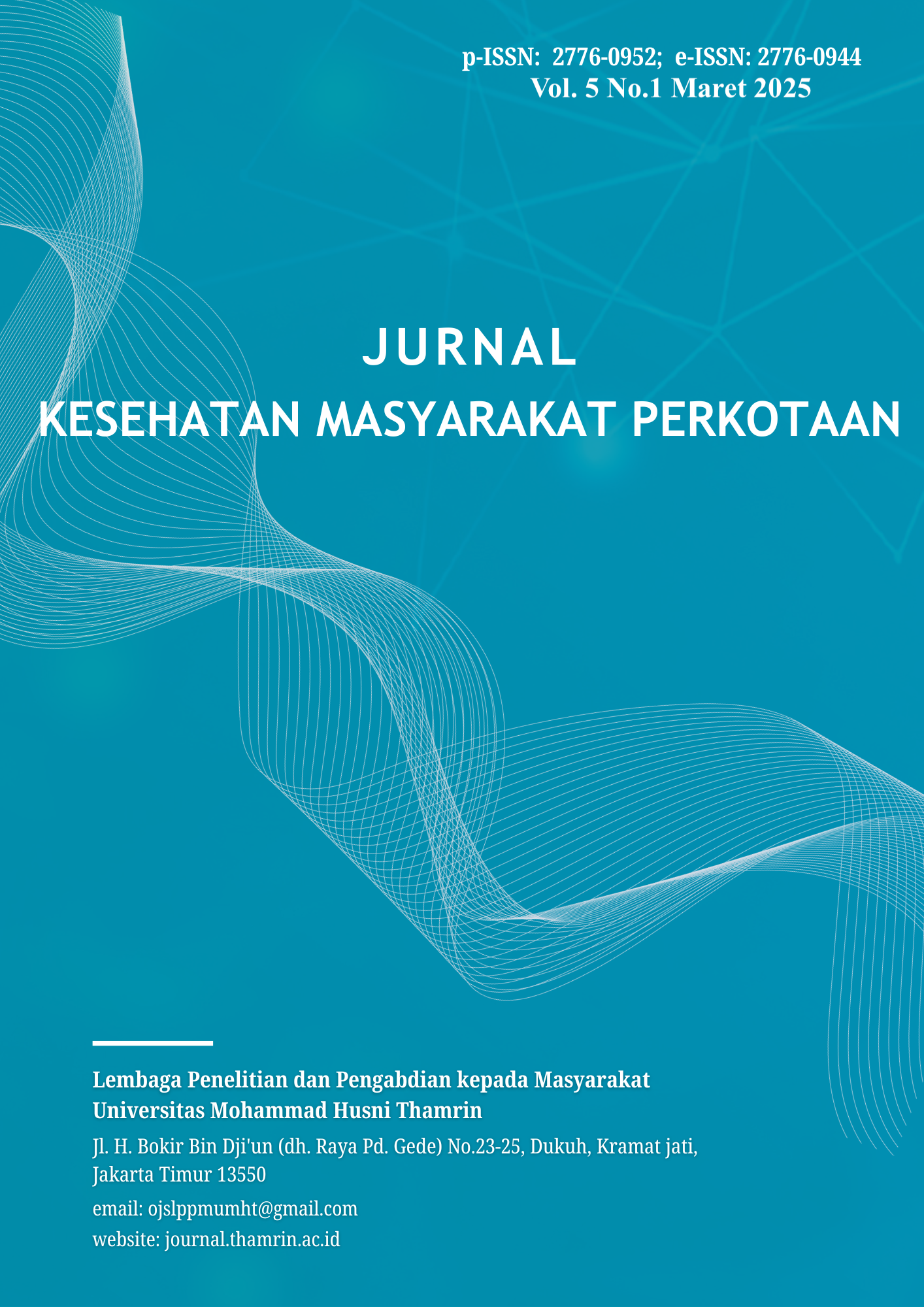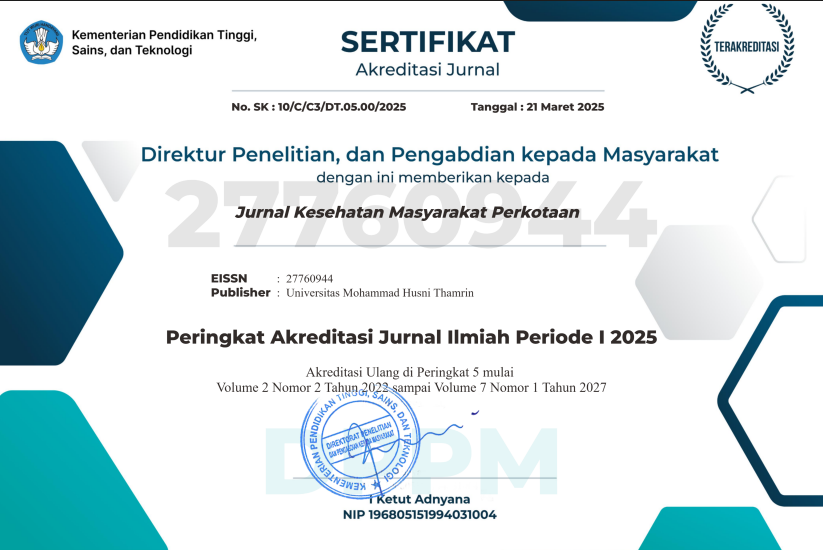Determinants of Clean and Healthy Living Behavior (PHBS) in Household Order in the Simon Rasul Neighborhood, MBSB Cileungsi Parish
DOI:
https://doi.org/10.37012/jkmp.v5i1.2778Abstract
Clean and Healthy Living Behavior (PHBS) is all health behaviors carried out consciously, so that family members or families can help themselves and play an active role in health activities in the community. The implementation of Clean and Healthy Living Behavior (PHBS) can play a major role in preventing disease and protecting the community from various health threats. The purpose of this study was to determine the Determinants of PHBS in the Household Order of the Simon Rasul Environment, MBSB Parish in 2024. The research approach was quantitative using primary data by filling out a questionnaire. The research design used Cross-Sectional. The target population was Households in the Simon Rasul Environment, MBSB Parish. From the results of the study, there were three unrelated variables, including age with a p-value of 0.701, education level with a P-value of 0.920 and the availability of infrastructure with a P-value of 0.730. Meanwhile, the related variables include the level of knowledge, with a P-value of 0.022 and an Odds Ratio (OR) of 4.714 (CI 95%: 1.404–15.829), attitude with a P-value of 0.042 and an Odds Ratio (OR) of 4.000 (CI 95%: 1.205–13.283), the role of community leaders with a P-value of 0.027 and an Odds Ratio (OR) of 4.600 (CI: 1.337–15.823). It is recommended that health cadres regularly conduct interactive PHBS counseling sessions, such as face-to-face sessions using posters or audio-visual media. Community leaders should also be involved as PHBS ambassadors, with special training to convey health messages during community activities.
Downloads
Published
How to Cite
Issue
Section
Citation Check
License
Copyright (c) 2025 Petrus Geroda Beda Ama, Trisna Budy Widjayanti, Yuyun Kurniawati

This work is licensed under a Creative Commons Attribution 4.0 International License.
Jurnal Kesehatan Masyarakat Perkotaan allows readers to read, download, copy, distribute, print, search, or link to the full texts of its articles and allow readers to use them for any other lawful purpose. The journal allows the author(s) to hold the copyright without restrictions. Finally, the journal allows the author(s) to retain publishing rights without restrictions Authors are allowed to archive their submitted article in an open access repository Authors are allowed to archive the final published article in an open access repository with an acknowledgment of its initial publication in this journal.

Lisensi Creative Commons Atribusi 4.0 Internasional.











